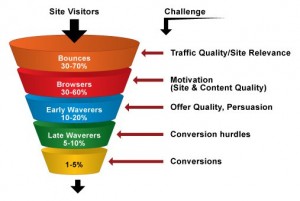By Matt Paver
Would anyone hear a tree being planted in a forest if no one was around to advertise it? We’ve seen corporate goals like “net zero by 2030” and “halving our carbon footprint” become ubiquitous over the past few years. It’s only natural that once targets have been set, businesses want to capitalize on their green efforts by communicating them to audiences. And the promotion of sustainability commitments can be a great thing; industry peers often feel pressure to follow suit, consumers are able to hold companies’ claims to account, and it gets more people talking about the path to net zero.
Increasingly, though, we are seeing companies getting burned in their quest for sustainability.
Nestlé had to backtrack on its carbon neutral target, Crocs delayed its net-zero goal by a decade, and both Fifa and Apple—two of the world’s best-known brands—have come under fire for their carbon-neutrality claims. Some of these companies’ targets have been undermined by an over-reliance on carbon offsetting and, as more studies reveal the extent of offsets’ ineffectiveness, we’re likely to see even more companies backtracking on their stated aims.
So, what happens if the reputational risk of making a false claim outweighs the benefits of becoming greener?
Some businesses have already taken to “greenhushing” in order to protect themselves from potential backlash, and others could simply press pause on initiatives. But the climate crisis is too urgent to let progress stall in this way. The path to net zero is uncharted territory and mistakes will be made. What should matter more is how businesses communicate their missteps and begin to course correct. Here’s how to “offset” failure:
When companies fall short on their advertised sustainability targets, they must double down on transparency. It might feel counterintuitive given that public openness likely exacerbated backlash in the first place—but companies should resist the urge to go into stealth mode. Failing to tackle the issue head on won’t restore the trust of consumers or investors, nor will planet-friendly platitudes.
Instead, companies should be specific about exactly which targets were missed (or revised) with a digestible explanation of the main reasons why. Crocs, for example, largely attributed its net-zero stumble to its 2022 acquisition of footwear company HeyDude, explaining that this could not have been factored in when original targets were set in 2021.
Offering up the particulars can also give businesses an opportunity to remind stakeholders of the goals that are still likely to be met; early this year, Crocs noted that its commitment to halve the carbon footprint of its Classic Clogs by 2030 still stands, and has even been extended to some HeyDude products. With this, Crocs publicly explained the failure and set about tackling the cause (in this case, emissions inherited with an acquisition).
Any company that has been caught scaling down their net-zero targets needs a solid, data-backed timeline to offer up instead. With this, they can explain how the revised strategy is actually a much sounder approach to a problem they’re still wholly committed to solving. Without clarity on next steps, businesses risk appearing to shirk responsibility or renege on commitments.
A crucial part of realistic target-setting is getting comfortable with smaller wins while building out a wider net-zero strategy. Achievability shouldn’t be sacrificed for ambition. While “net zero by 2050” might be the eventual goal, companies should be setting and reaching targets in the near term. Carving out smaller, more manageable goals for the next 12 months, or two to three years, will help businesses stay on track, but also provide them with interim status updates that can be shared with stakeholders to restore trust.
U.K. bakery chain Greggs, for example, has committed to publishing regular short-term targets while it works toward its 2025 sustainability goals. Each report features comprehensive data and demonstrates how the company is making tangible improvements every year.
Missing publicly shared net-zero goals poses a huge risk to brand reputation, investment prospects, and the planet. It should never catch a business off guard. If unrealistic targets are set, it’s likely because a business didn’t create a baseline that was informed by existing data. Without this, it’s impossible to gauge progress, get in front of any risk areas, or anticipate failure.
Data is the most valuable tool a business can have when it comes to setting and reaching net-zero goals. Having a means of measuring the success of implemented changes is critical, and robust data ensures companies can have confidence in their green claims. Conducting regular internal audits of net-zero progress will help to preempt missed targets and give a business time to communicate any changes in direction to its stakeholders.
Companies that have been blindsided by their failure must prioritize data collection and maturation. Without it, they won’t even be able to pinpoint where their targets went awry.
(1)







